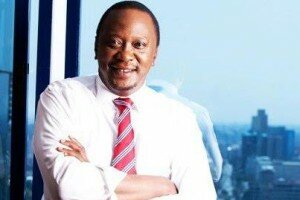
Image: facebook.com/esther.pasaris
The slogan was meant to paint a dividing line between the old and young, with Kenya’s youth representing more than 70 per cent of the voters.
To back this up the Jubilee Coalition, led by Uhuru Kenyatta, launched a tech-focused manifesto that among other things promised a laptop for every school child, establishment of a universal single registration system and expansion of the fibre-optic network.
To young Kenyans, especially the elite, this seemed like the dream government for a country that has been governed by ageing presidents since independence.
The outgoing president Mwai Kibaki is 82, while former president Moi led Kenya until the age of 78 and founding president Jomo Kenyatta died at the age of 89.
Kenyans were thereby looking for new leadership, with the biggest rival to Kenyatta - Raila Odinga, aged 68 - seemingly too old for the new Kenyan generation.
This is especially important considering that many see it as unlikely that an incumbent president will leave office through an election, with many Kenyans seeing Kenyatta’s presidency as likely to end in 2023.
The president-elect, at 51, is young by African standards, with the deputy president-elect William Ruto even younger at 46. Another force behind the coalition was former tourism minister Najib Balala - 45 - while the oldest member of the coalition was Charity Ngilu, aged 60.
It may be, however, that the digital term used by the Jubilee Coalition had nothing to do with technology but was rather a ploy to alienate an older rival. Raila Odinga, like Uhuru Kenyatta, has an active social media presence, with both coalitions having a detailed ICT plan in their manifesto.
As to how much the age of a president has to do with technological policies, many will agree Kenya has emerged as a technology powerhouse under the leadership of Mwai Kibaki, one of the oldest presidents in Africa, hence the relationship between age and technology might be a fallacy created for political survival.





















































